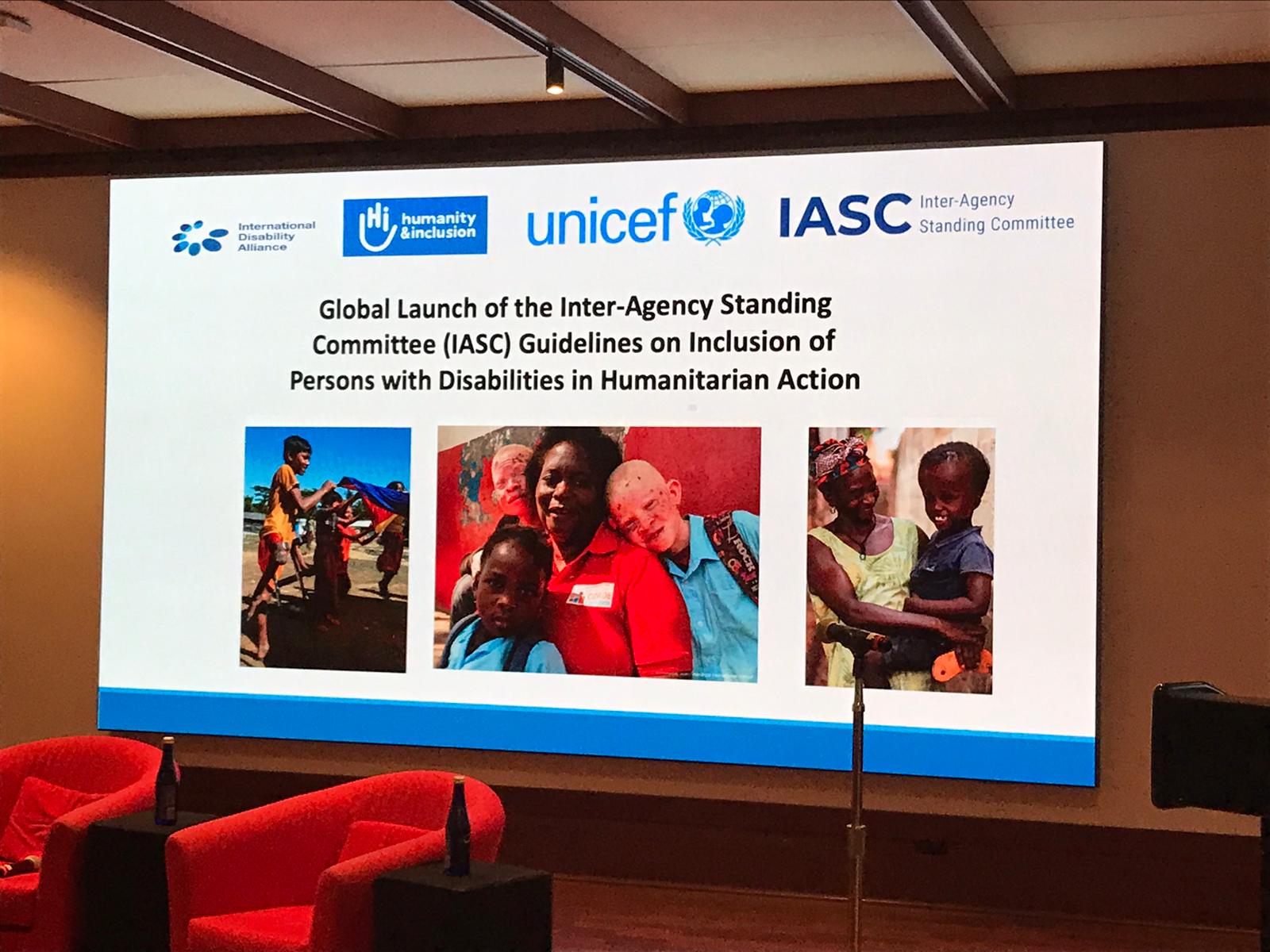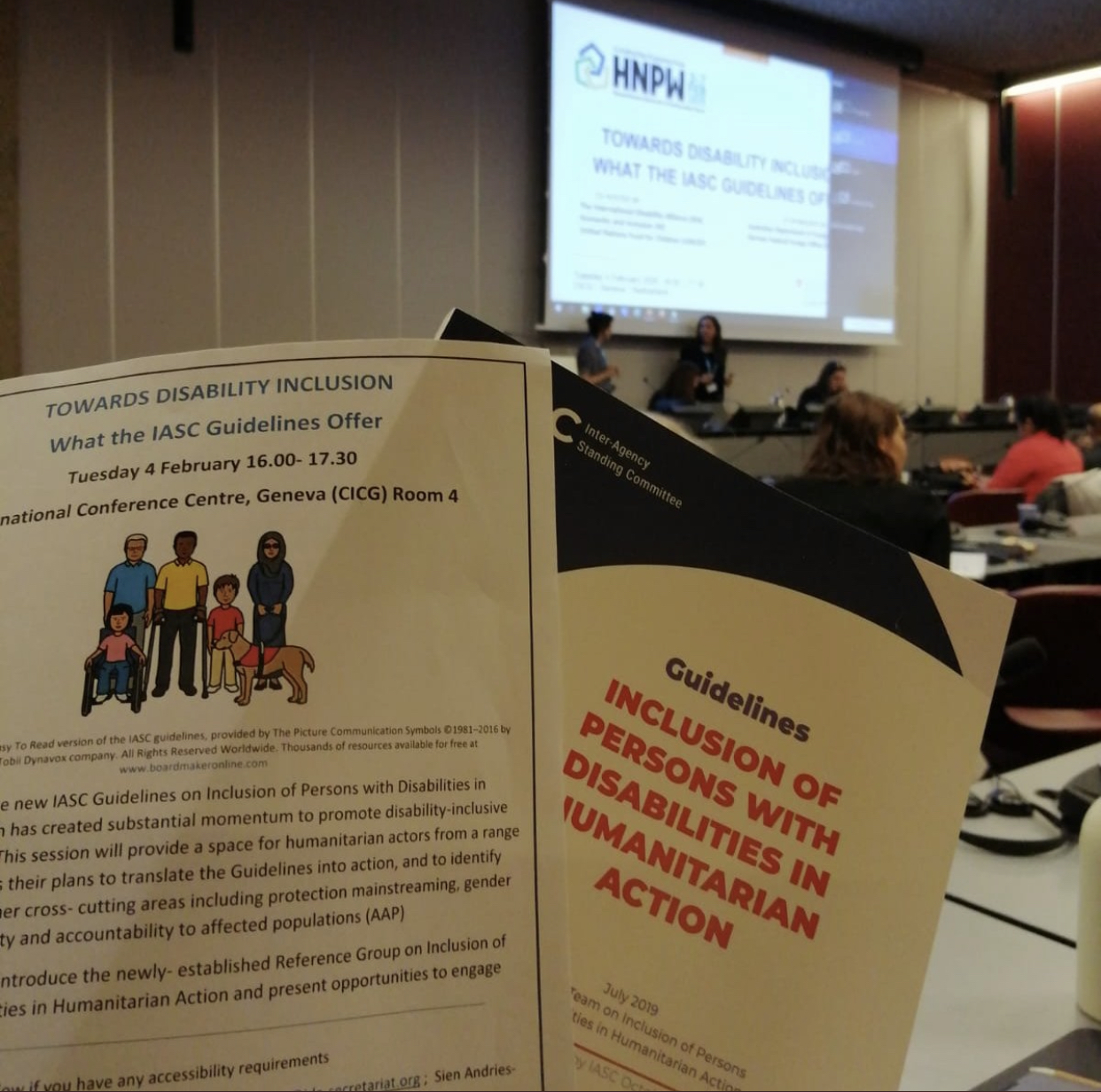
IASC Guidelines on Inclusion
Our goal: Support the operationalization of the global Inter-Agency Standing Committee (IASC) Guidelines on Inclusion of Persons with Disabilities in Humanitarian Action through capacity and tool development, local technical support and surge capacity mechanisms and applied research.
IASC Guidelines - Milestone on Disability-Inclusion
The idea of system-wide, cross-sectorial Guidelines on the Inclusion of Persons with Disabilities in Humanitarian Action arose with the launch of the Charter on Inclusion of Persons with Disabilities in Humanitarian Action (Humanitarian Disability Charta) during the first World Humanitarian Summit in Istanbul in 2016.
Thus, the IASC Guidelines are the result of a three-year comprehensive and inclusive consultation process, in which more than 600 humanitarian actors and organisations of persons with disabilities from around the world participated. The development and dissemination process was coordinated by the IASC Task Team in Inclusion of Persons with Disabilties in Humanitarian Action, which was co-chaired by the International Disability Alliance (IDA), UNICEF and Humanity & Inclusion (HI) and supported substantially by the "Phase 2 - Leave no one behind!".
Launched in 2019 in New York City, the Guidelines are a milestone in terms of including persons with disabilities in all sectors and phases of humanitarian action. They set out necessary actions that humanitarian actors must take to identify and respond to basic and specific requirements of persons with disabilities in humanitarian settings and to ensure equitable protection to them. The Guidelines put persons with disabilities at the centre of humanitarian action applying a rights-based approach on disability. For more information and all available translations, you can also visit the IASC webpage.
The Red Thread of Our Project

Currently, over 200 actors collaborate jointly in the Reference Group on Inclusion of Persons with Disabilities in Humanitarian Action, also known as Disability Reference Group (DRG) to develop and pilot useful tools and resources in order to operationalise the IASC Guidelines.
The Phase 3 – Leave no one behind! is part of this process and supports the operationalisation by continuing its work on capacity development of humanitarian actors, applied research, tool development and technical & surge capacity mechanisms. The big variety of our activities on global, national and local level all have the same reference: The IASC Guidelines. In other words, they are the red threat of our project!